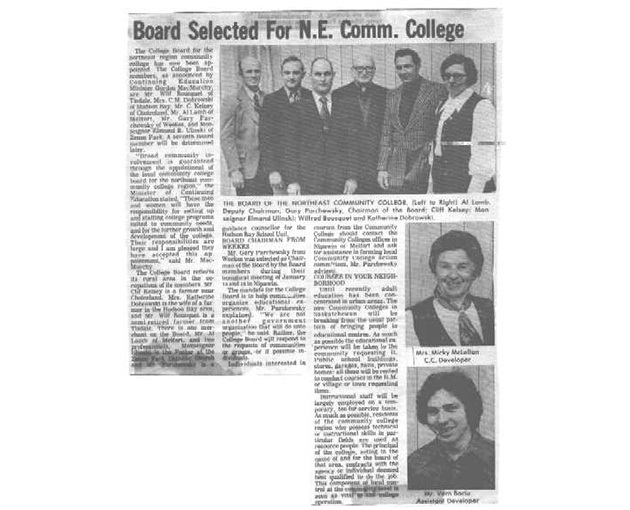
In April, 1975...
Mr. Elias Nesdoly was appointed principal. Mr. Art Karras was appointed Secretary-Treasurer of the community college the following month. By June of 1975 , there were 2 other staff members working out of the Nipawin office, a Program Coordinator, Susan Weber, and a Clerk-Stenographer, Colleen Meyer. A second Program Coordinator, Rilla Edwards was working out of the Melfort office. During the spring of 1975, the college held a public contest ("Here’s Your Chance to WIN $25.00!) to determine a Cumberland Community College logo. The awards for the prize-winning entries in the contest went to James Weseen of Star City and Bruce Dawson of Nipawin. James Weseen presented the idea of using the three C’s and Bruce Dawson’s sketch showed a person paddling a canoe. Mrs. Kay Dobrowski, a member of the College Board, recommended to the Board that these two ideas be incorporated into one logo. The College Board accepted this recommendation and the final result is shown on the cover of this booklet. Bruce Dawson, in submitting his entry of the canoeist stated, "The waterways and woodlands are part of our heritage. In this region, Indians and European trappers and traders used canoes for travel for centuries. The canoe represents the College itself, providing opportunities in the rivers, the currents of life." Adult learning requests and community participation expanded throughout 1975 as did the volume of courses provided throughout the region. The first courses to be held in the region were between February and June, 1975. One hundred eighty-three adult learners took part in 11 courses during these first 5 months of programming. The first shared, cost program sponsored by Canada Manpower was held in Melfort for "Visiting Homemakers" with 8 participants.
